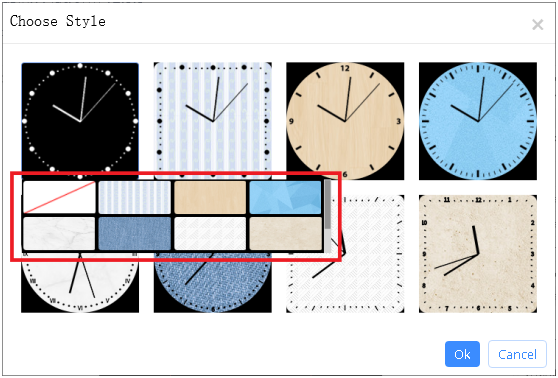5.10.3 Create the list
In the simplified version, users will directly create and edit play lists, and a single program can only exist attached to each play list.Users can create and edit programs in the program list.If the user wants to create a new program list, click the plus sign in the lower left corner of "program list", as shown in picture 5.10-6. A window for creating a new program list will be displayed on the page.

picture 5.10-6
After creating a new program list, it will enter the production page, which is divided into left, middle and right parts, including playlist, screen, partition and properties, as shown in picture 5.10-7.
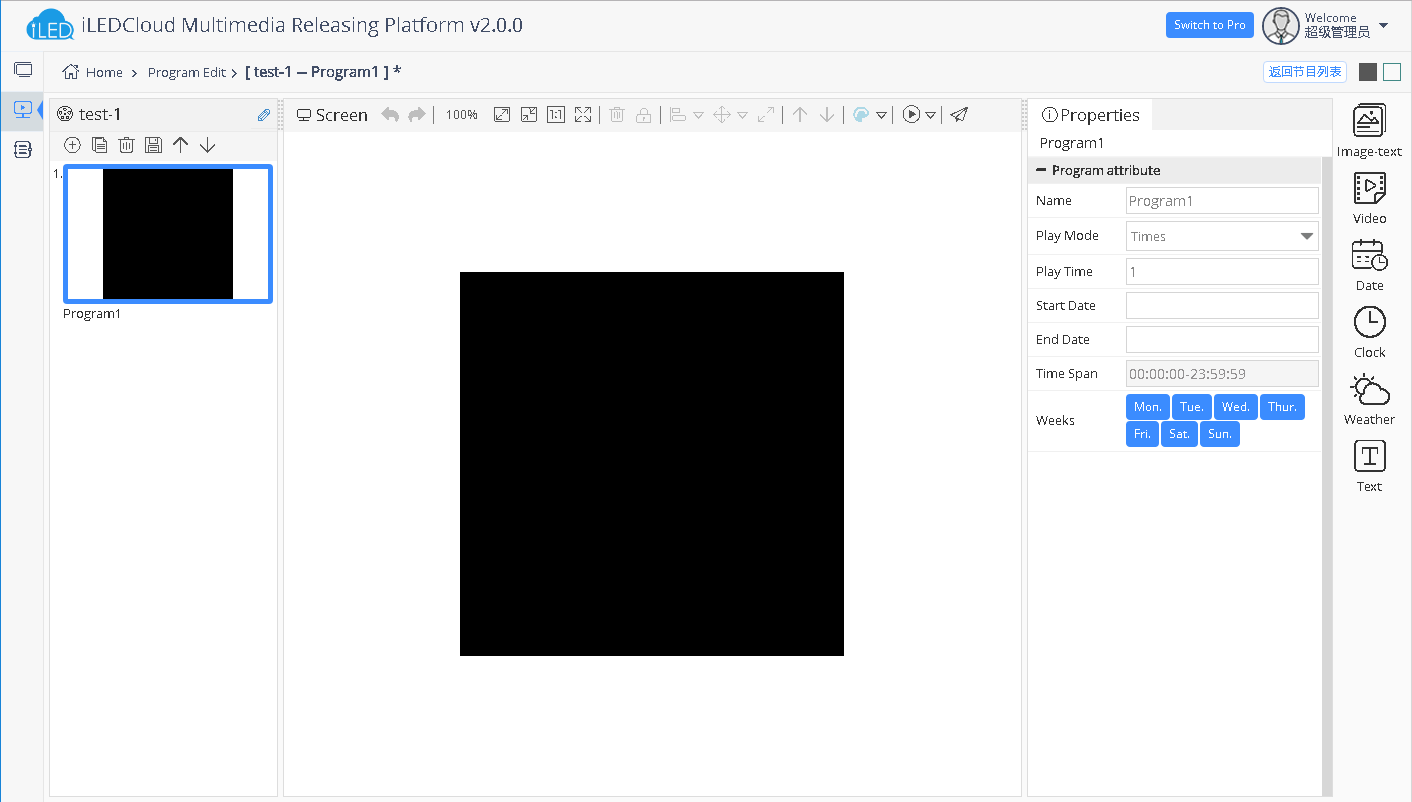
picture 5.10-7
1. on the left of page
On the left is a preview of the playlist, as shown in picture 5.10-8. Each rectangle represents a program, which will be highlighted when selected.Users can add, delete, copy, paste, and adjust the order of programs in the list here, with some button comments as shown in table 5.10-3.
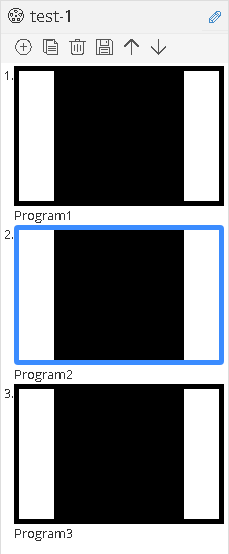
picture 5.10-8
| button | function |
|---|---|
 |
add one empty program in the end of playlist |
 |
copy one same program in the end of playlist |
 |
Delete the selected program |
 |
Save this list |
 |
adjust the program location up and down |
 |
The name of edit list |
table 5.10-3
2. Middle area of the page
The middle area of the page is composed of screen parts for partition placement and effect display, as shown in picture 5.10-9. Some button notes are shown in table 5.10-4.The black area in the middle is the screen, where the user can place the partition for editing.
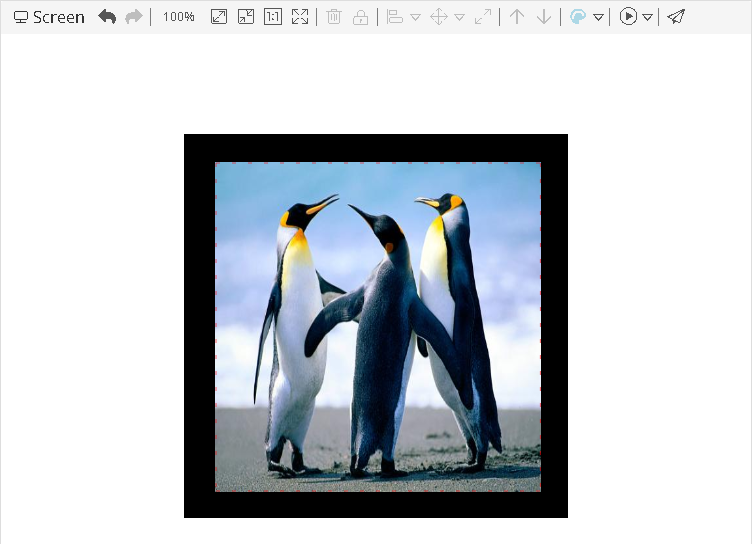
picture 5.10-9
| button | function |
|---|---|
 |
Undo and redo |
 |
Zoom scale, display the current screen zoom scale, can be manually adjusted |
 |
zoom in screen |
 |
zoom out screen |
 |
screen show follow the original size |
 |
display all the screen |
 |
delete the selected zone |
 |
select the locked ,after unlocked then to move |
 |
Alignment, select multiple partitions at the same time to set its alignment (there are multiple alignment options in the sub-menu) |
 |
Size assimilation, which keeps the size, width, or height of the selected partitions consistent (there are multiple size assimilation options in the sub-menu) |
 |
Expand the partition to full screen and fill the screen with partitions |
 |
move up and move down to adjust the structure position of the selected partition |
 |
Non-grayscale program preview button, preview different color mode program effect (sub-menu has "single color", "dual-color" and "tri-color" button) |
 |
Preview the current program (there are buttons of "accelerated play", "normal play" and "decelerated play" in the sub-menu) |
 |
release the program list |
table 5.10-4
3. The right zone of the page
The area on the right side of the page is composed of partition bar, property bar and material bar. The corresponding supported partition will be displayed in the partition bar, as shown in picture 5.10-10. Each partition has different effects, and users can directly double-click or drag to add a partition.At present, there are six simple version of the partition, respectively is image-text, video, date,clock, weather and text partition.

picture 5.10-10
After adding graphic, video, plain text partition, the right area will show the material bar.Users can directly right - click, double - click or drag to add material in the partition.Users can also add materials in the material bar. Just click the add button to complete the adding, as shown in picture 5.10-11.
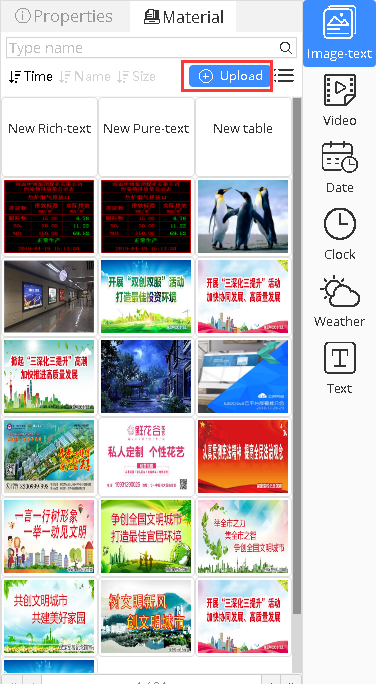
picture 5.10-11
The property bar will display some property values of the current program and the currently selected partition. If no partition is selected, the broadcast property of the program will be displayed. Users can modify the data to change the broadcast mode and duration of the program, as shown in picture 5.10-12.
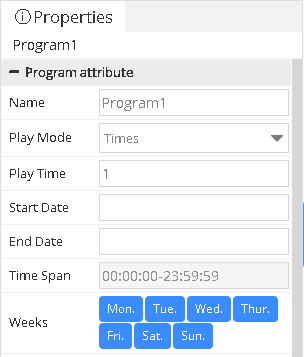
picture 5.10-12
After a partition is selected, the right property bar will show the partition property of the partition. In the simple version, we appropriately reduce the items that can be modified in the partition property according to the user's habits, hoping to shorten the time for the user to make the program.In addition, we have designed the style template for the dial, weather, and time partition, which can be opened in the "style" of the partition attribute. Each partition has 8 styles and 8 shading patterns for users to freely combine and match according to their needs, without requiring users to manually adjust the styles.As shown in picture 5.10-13 below, the dial partition can be used as an example to select the dial style and replace the background pattern.
